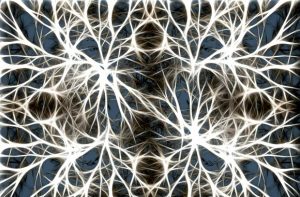Hormone Disorders
The multiple activities of the cells, tissues, and organs of the body are coordinated by the interplay of various types of chemical messengers systems. These are hormones.
Hormones are chemicals released by the glands that affect different organs of the body. They are of two types
- Exocrine hormones: These are released into the ducts first and then enter into the blood.
- Endocrine Hormone: These hormones are secreted directly into the bloodstream.
Endocrine hormones play very important roles and their dysfunction, deficiency or excess lead to a wide variety of problems throughout the body called hormone disorders.
Some endocrine hormones are as follow along with their functions.
- Growth hormones are necessary for growth in various parts of the body.
- Thyroxin increases the rate of many chemical reactions in the body.
- Adrenocorticotropin hormones are essential for the reproductive system.
- Mineralocorticoids are important for the regulation of the body’s electrolytes.
- Glucocorticoids are important for stress and inflammation.
- Insulin regulates our body’s glucose level.
- Parathyroid hormone control extracellular calcium and phosphate concentration.
Some hormone disorders are as follows:
Dwarfism: This is a condition due to decrease growth hormone secretion. All the physical parts of the body develop appropriately but the rate of development is greatly reduced. So the person is of short stature.
Gigantism: This condition is due to an increase in growth hormone which results in increased height so that a person becomes a giant.
Acromegaly: The acidophilic tumor leads to increase bone thickness and continuous growth of the soft tissues.
Hyperthyroidism: This is a condition in which an increase in thyroid hormone leads to many changes in the body. These people show excitation, restlessness, weakness in muscles, increase appetite and extreme fatigue, etc.
Hypothyroidism: This is due to iodine deficiency usually but other causes are also linked to this disease. This led to the formation of an endemic colloid goiter.
Myxedema: This disease is due to the complete absence of thyroid hormone function. So such a patient shows bagginess under the eyes and swelling of the face.
Cretinism: This disease is in children and is due to hypothyroidism. Skeletal growth is more inhibited. Such a child is obese, stocky, and short in appearance.
Addison’s disease: This disease results from the failure of the adrenal cortices to produce adrenocortical hormones. These patients undergo different types of stress, and infection and these things lead to their death.
Cushing’s syndrome: This syndrome is due to a large amount of cortisol in the body. Patients of this disease show moon face, the appearance of a buffalo torso, acne, and hirsutism. Hypertension is also seen here.
Diabetes Mellitus: This disease is a syndrome of impaired carbohydrate, fat, and protein metabolism which is the result of either lack of insulin secretion or due to decrease sensitivity.
Hypoparathyroidism: This is due to a decrease in parathyroid hormone and results in spasms of muscles. Respiratory muscle spasms can lead to death even.
Hyperparathyroidism: This is an abnormality of the parathyroid hormone gland which leads to increased parathyroid hormone release which results in bone diseases and kidney stones as well.
Rickets: It is due to vitamin D deficiency in children leading to legs bowing.
Osteoporosis: This disease results from decreased organic bone matrix.
Polycystic ovarian disease: It is due to excess of an adrenergic hormone in females caused by menstrual irregularities.
Hypergonadism: This results due to increase secretions of testosterone due to a tumor or other pathology.

Sleep Disorders
Sleep disorders are a complex variety of sleep-related disorders. It involves an inability to sleep, fall asleep frequently and quickly, scanty sleep, an excess amount of sleep, and different types of abnormal behaviors seen during sleep.
Forms
There are a large number of forms of sleep disorders. Broadly classification include
- Insomnia
- Hypersomnia
- Parasomnia
Insomnias
An inability to sleep is called insomnia. It is further divided into
- Delayed sleep phase syndrome: Here patient feels better sleeping at the times other than normal.
- Psychological insomnia: If a person is under stress, it feels difficult to fall asleep.
- Stimulant-dependent sleep disorder: Here insomnia occurs when a person becomes dependent on a certain stimulant to cause him to fall asleep.
- Hypnotic-dependent sleep disorder: It is a type of insomnia in which a person becomes so much dependent on the medicines that without taking them, he won’t feel sleepy.
Hypersomnia
It is a disorder in which a person feels an excessive amount of sleep. It further includes
- Narcolepsy: This condition is characterized by uncontrolled bouts of sleepiness during the day. It is also associated sometimes with loss of muscle control, or by a strong emotion such as laughter.
- Idiopathic hyper insomnia: Here a person remains sleepy or feels excess sleep without any causes or pathology.
- Restless leg syndrome: Due to improper sleep at night because of a restless leg in which the patient develops an urge to move it, a person remains sleepy throughout the day.
- Sleep apnea: It is a condition in which the patient feels difficulty in breathing during sleep which is because of temporary blockage of airways, leading to sleepiness and fatigue during the day.
Parasomnias
These are the strange and abnormal behavior associated with sleep. In this condition, a person walks asleep, and there occur tremors during sleep one other disorder is a rapid eye movement disorder in which a person behaves very strangely during sleep and is in a dream state and so can harm the person sleeping beside him. Some children show a problem with urination or bedwetting at night. Some talk a lot while sleeping and do teeth grinding. Sexsomnia is also seen in many peoples who find it to engage in different sexual activities during sleep.
Likewise, there are lots of other psychological problems that disturb sleep and created problems in it. These include depression, anxiety, and schizophrenia, due to excess alcohol intake, mania, and panic disorders.
Symptoms
They are of various types depending on the type of sleep disorder. These include fatigue, unfresh mind, low energy during the day, snoring and choking in case of sleep apnea at night, poor concentration, and feeling of illness all the time.
Treatment*
- Treatment* of Insomnia: Here as sleep is scanty so certain sedative medicines are helpful. The safest class of sedatives and hypnotics is benzodiazepines, especially diazepam. Others include flurazepam, temazepam, and triazolam. These are effective in a person feeling difficulty in falling asleep.
- Treatment* of Hypersomnia: In the case of hyper insomnia certain CNS stimulants are found beneficial. Narcolepsy can be effectively treated with modafinil and armodafinil.
- Treatment* of Parasomnias: These are treated depending on the form which is seen in an individual. Benzodiazepines have been found to be helpful here.

Premenstrual Syndrome PMS
Premenstrual syndrome is a separate entity from painful periods. It is linked to the menstrual cycle and occurs one to two weeks before the onset of periods. It is seen in women over the age of 30 years.
Signs and Symptoms
It is characterized by premenstrual discomfort in the lower abdomen and back and breast. It is described as a bloated feeling of distention or pelvic engorgement, which proceeds for a week or 10 days. There is a varying degree of irritability, depression, other emotional disturbances, and headaches as well.
Some women may complain of deterioration in their concentration and it is said that there is a relative relationship between violent and antisocial behavior and this condition. Examination performance may be affected at this time. There may be food cravings also. The patient may show a gain of weight of 1 kg or more in the latter half of the menstrual cycle due to salt and water retention. There seem acne, sleeping problem, muscle or joint pain, and fatigue as well
Causes
The exact cause of this syndrome is not known. But it is seemed it occurs due to hormonal changes which occur during this period. It occurs in the luteal phase. The retention of salt and water which leads to weight gain is due to ovarian steroids, but there is also an increased output of antidiuretic hormones from the posterior pituitary gland. A relative lack of progesterone may also cause this syndrome. Bad personal habits like drinking alcohol or cigarette smoking all lead to this disease.
Diagnosis
Emotional stress often contributes to the symptoms and the social relationships of the patient must be reviewed after taking a complete history. A pelvic examination to exclude any unexpected pelvic pathology is also essential here. A baseline investigation should be done to check other abnormalities.
Treatment*
The exploration of emotional and work-related stress often allows the woman to reveal her problems and compensate accordingly.
The reassurance and psychotherapy will help too, but it is also essential to treat the symptoms with drugs. Some women get relief from diuretics such as chlorothiazide. Progesterone helps some women too. Estrogens have been used to suppress ovulation on the basis that cyclical ovarian activity is necessary for the symptoms of this premenstrual syndrome. They can be given as oestradiol implants which last for three to six months. A more flexible approach is to use transdermal oestradiol patches. They contain cyclical norethisterone.
Combined oral contraceptive pills may also be of benefit because they suppress ovulation. Evening primrose oil has been widely used; it may have some benefits. Prostaglandin synthetase inhibitors may improve fatigue, headache, general aches, pains, and general mood symptoms.
Danazol which suppresses gonadotropin secretion and abolishes cyclical ovarian function is also beneficial.
Gonadotrophin-releasing hormone analogs have been used for premenstrual syndrome treatment. Some women respond to mild tranquilizers or antidepressants. Bromocriptine may be tried if mastalgia is a problem.
Improve your diet, avoid stress, increase vitamin use and stay tension free if you want to be saved from this syndrome.

Sex Dysfunctions
Sex dysfunctions are those disorders in which couples feel certain difficulties or problems which are related to their intercourse, orgasm, and arousal.
Causes
These dysfunctions can be due to various reasons. Some are due to some pathology in their organs due to certain diseases like cardiovascular disease, diabetes, hormonal imbalance, kidney diseases of chronic nature, or chronic liver diseases. These may also arise due to long-term alcohol and drug abuse while other sexual dysfunctions are due to psychological problems, mood disorders like anxiety, depression, stress, tensions, or behavioral problems. They can also be due to the effects of past sexual trauma due to rape or sexual abuse.
Men
These most commonly involved include ejaculation problems and erectile dysfunctions.
- Ejaculation Problems: These are the problems that arise during ejaculation and are divided into premature ejaculation which is ejaculation before penetration, retrograde ejaculation which does not come out of the penis and retarded ejaculation which occurs slowly than normal.
It is seen that premature ejaculation is due to the poor attraction of partners or stress on the mind while retrograde results from any neuropathy of the nerves supplying the penis which is due to some systemic disease.
- Erectile dysfunction: This is a dysfunction in which a person fails to achieve an erection so he does not get sexual pleasure as a normal person gets. This thing can lead to impotency in men.
Women
Women also feel lots of problems in their sexual life. Some of them are
- Arousal Disorders: These are a result of no feeling of sexual seduction and a female not being aroused.
- Desire Disorder: This disordered person has no sexual desire.
- Vaginismus: Here involuntary contraction of vaginal muscles occurs that create disruption in sexual intercourse.
- Lubrication problems: Here vagina cannot be lubricated well which results in difficult penetration.
- Sexual pain Disorders: A woman feels pain during intercourse.
- Orgasmic disorder: Women do not feel any orgasm.
- Dyspareunia: In this disorder, pain occurs during intercourse and may be due to some underlying pathology or psychological reason.
- Vulvodynia: It is the pain in the vulva during sex. It is a burning type of pain.
Common in both men and women
There are various sex-related disorders common to both males and females. Some of them are due to medical reasons and some are due to psychological. A few of them are as follows.
Sexually Transmitted Diseases: These are due to infections in sexual organs leading to transmission of diseases and creating problems in sexual intercourse.
Sexual eversion disorders: Here both sexes feel everted from sex and its act.
Hypersexuality: In this disorder, both sexes feel an intense urge for sexual orgasm or activity.
Persistent genital arousal syndrome: Here they feel continuous and even uncontrolled sexual arousal despite having no sexual desire.
Sex Addiction: There are reports where sex-addicted people are noticed. So this is also excess sex desire and urges disorder.
Treatment*
For both men and women, the first treatment is removing the etiology causing these disorders and then psychotherapy is also essential to remove stress and make their life sexually healthy so they may enjoy good relationships with their partners.

High & Low Blood Pressure
Blood pressure is the product of heart rate, stroke volume, and peripheral resistance. There are two levels of blood pressure namely the systolic and the diastolic.
- Systole is the measure of blood pressure when the heart is working i.e. beating
- Diastole is the measure of blood pressure when the heart is at rest i.e. not beating.
Normal blood pressure is 120/80 mm Hg. Blood pressure can be high or low depending on the pathology.
High Blood Pressure – Hypertension
If the sustained increase in blood pressure or arterial pressure occurs for a long time period it is called high blood pressure or hypertension. This is a serious condition. Elevated blood pressure can be harmful to our blood vessels and the heart.
Classification
It is classified as
Primary
It is also called essential hypertension. About 90 to 95 percent of people have primary hypertension. This hypertension is of unknown origin so it is called essential or primary.
Characteristics of Primary hypertension
- These are caused by obesity and include
- Cardiac output is increased due to additional blood flow for extra adipose tissues.
- Sympathetic nerve activity in the kidney especially is increased in overweight patients.
- Angiotensin and aldosterone levels are increased in many obese people. These cause salt and water retention and volume overload.
- There is an impairment of the renal pressure natriuresis mechanism and the kidney does not excrete an adequate amount of salt and water.
Secondary
It is due to some causes such as renal artery stenosis or other heart-related.
Causes
There are various causes of high blood pressure.
- Increase intake of salt: When a person uses an increased amount of salt, it leads to an increase in extracellular volume by absorbing water from the tissues and increasing thirst by which we drink more water and the result is an increased blood volume. This leads to an increase in arterial pressure and therefore increased blood pressure.
- Sedentary lifestyle
- Excess weight gain
- Pathology of the renal arterial system
- Excess aldosterone hormone
- Impaired renal fluid excretion
Signs and Symptoms
If blood pressure increase is mild, there will be no symptoms. In case of severely elevated BP headaches, nausea and vomiting occur. Morning headaches are the characteristics of severe hypertension.
Treatment*
Lifestyle modification is required. Increased physical activity and weight loss are recommended.
Two general classes of drugs are used to treat high blood pressure these are
- Diuretic or natriuretic drugs: These drugs decrease tubular reabsorption of salt and water. These block transport of sodium through the tubular wall.
- Vasodilator drugs: These drugs increase renal blood flow.
Low Blood Pressure – Hypotension
Low blood pressure is called hypotension. Here systolic blood pressure is usually below 90 mm Hg and diastole is usually below 60 mm Hg.
Causes
It can be due to
- Anemia
- Poor fluid intake
- Decrease blood volume leading to hypovolemia
- Chronic heart failure
- Hormonal changes
- Pathology of blood vessels
- Certain medicines cause hypotension
Sign and Symptoms
In low blood pressure, many signs and symptoms arise and these are breathlessness, chest pain, weak and rapid pulse, seizures, vomiting, headache, and fatigue.
Treatment*
The treatment aims to normalize the blood pressure to a normal value. Certain medicines are helpful in restoring normal BP. Normal saline is also helpful.

Obesity
Obesity is a disorder of the body weight regulatory system which is characterized by an accumulation of excess body fats in the body. It results when energy intake exceeds energy expenditure.
The current abundance of food has encouraged people to eat more. This in combination with less physical activities in industrialized societies has resulted in a tendency for sustained deposition of body fats. The prevalence of obesity increases with age. Due to increased adiposity, the risk of diseases such as hypertension, diabetes, and cardiovascular diseases has increased.
Assessment
The amount of body fat is difficult to measure directly and is usually determined by indirect measures, the body mass index; is the weight in kg divided by height in meters squared. The healthy range for BMI is between 19 and 25. Between 25 and 29 BPI, people are considered overweight, and equal to or greater than 30 are obese.
Anatomic Difference in Deposition of Fats
The anatomic deposition has shown a major effect on associated health risks.
Excess fat accumulation in the abdomen is called apple-shaped obesity. This obesity is associated with hypertension, insulin resistance, diabetes, dyslipidemia, and coronary heart diseases.
In contrast, fat accumulation in the hip is called pear-shaped obesity.
Biochemical Difference
The cells of the abdomen are much larger and have a high rate of turnover than lower body fats. Because men tend to accumulate more mobilized abdominal fats, they generally lose weight more readily than women.
Bodyweight tends to remain stable as long as the behavioral and environmental factors influencing the energy balance remain constant.
Genetic Contribution
In spite of the widely held belief that obesity is due to uncontrolled gluttonous eating, it is now proved too that genetics also play a major role in determining body weight, rather than a lack of willpower. For example, obesity is often seen clustered in families. If both parents are obese there are chances of about 75%, of their children being obese. Obesity behaves as a complex polygenic disease that involves interaction between multiple genes and the environment.
Environmental and Behavioral Contributions
Environmental factors such as the ready availability of palatable, energy-dense foods play a role in the increased prevalence of obesity. Further sedentary lifestyles, encouraged by watching TV, automobiles, computer usage, and lots of other energy-sparing devices in the workplace and at home enhance the tendency to gain weight.
Hormones That Influence Obesity
Hormones of adipose tissue such as leptin, adiponectin, and resistin lead to obesity. The adipose tissue is the site of fat storage but it also functions as endocrine cells which release these hormones.
Ghrelin a hormone secreted by the stomach is the appetite-stimulating hormone.
Metabolic Changes Observed
The predominant effect of obesity includes dyslipidemias, glucose intolerance, and insulin resistance, expressed primarily in the liver, muscle, and adipose tissue.
Dyslipidemia: Insulin resistance in obese people leads to increased production of insulin in an effort by the body to maintain blood glucose levels. This results in increased levels of fatty acids which are carried to the liver and converted to triacylglycerol and cholesterol. This is called dyslipidemia.
Metabolic Syndrome: Abdominal obesity is associated with a threatening combination of metabolic abnormalities that includes glucose intolerance, hyperinsulinemia, increase LDL and decrease HDL, etc and this clustering of metabolic abnormalities is known as metabolic syndrome.
Weight Reduction Methods
The goal of an obese individual is to decrease caloric intake and increase energy expenditure. It can be achieved by
- An Increase in physical activity
- Restriction of calories intake
- Pharmacological intervention e.g. taking an appetite suppressant
- Surgical treatment reduces food consumption.




